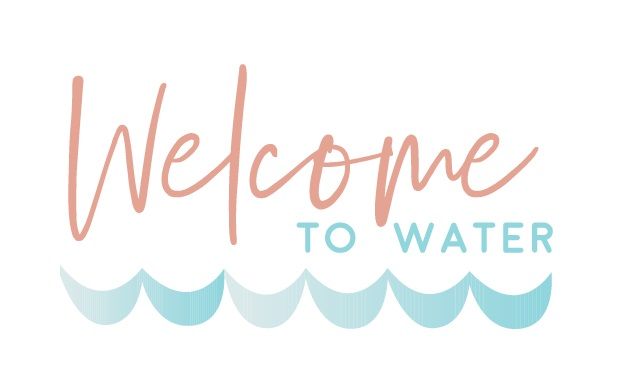Welcome to Water
How to teach my newborn to swim at home
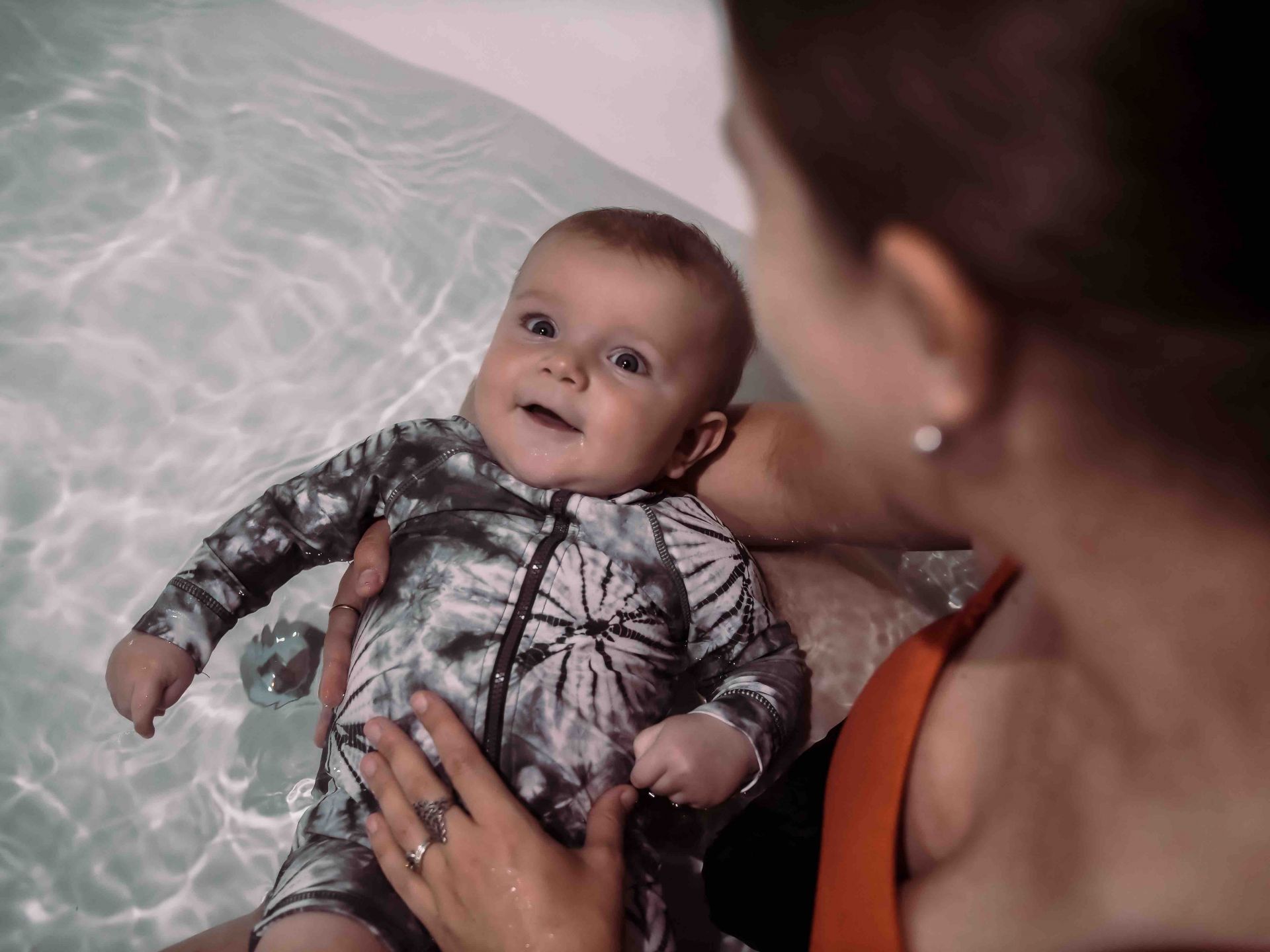
Do you have a new born? Do you have a bath? You can now start your swimming teaching career, with your own child as your test subject!
All you need to know, is what to do, or not to do, with your splashing new little bundle of joy.
Get straight into it!
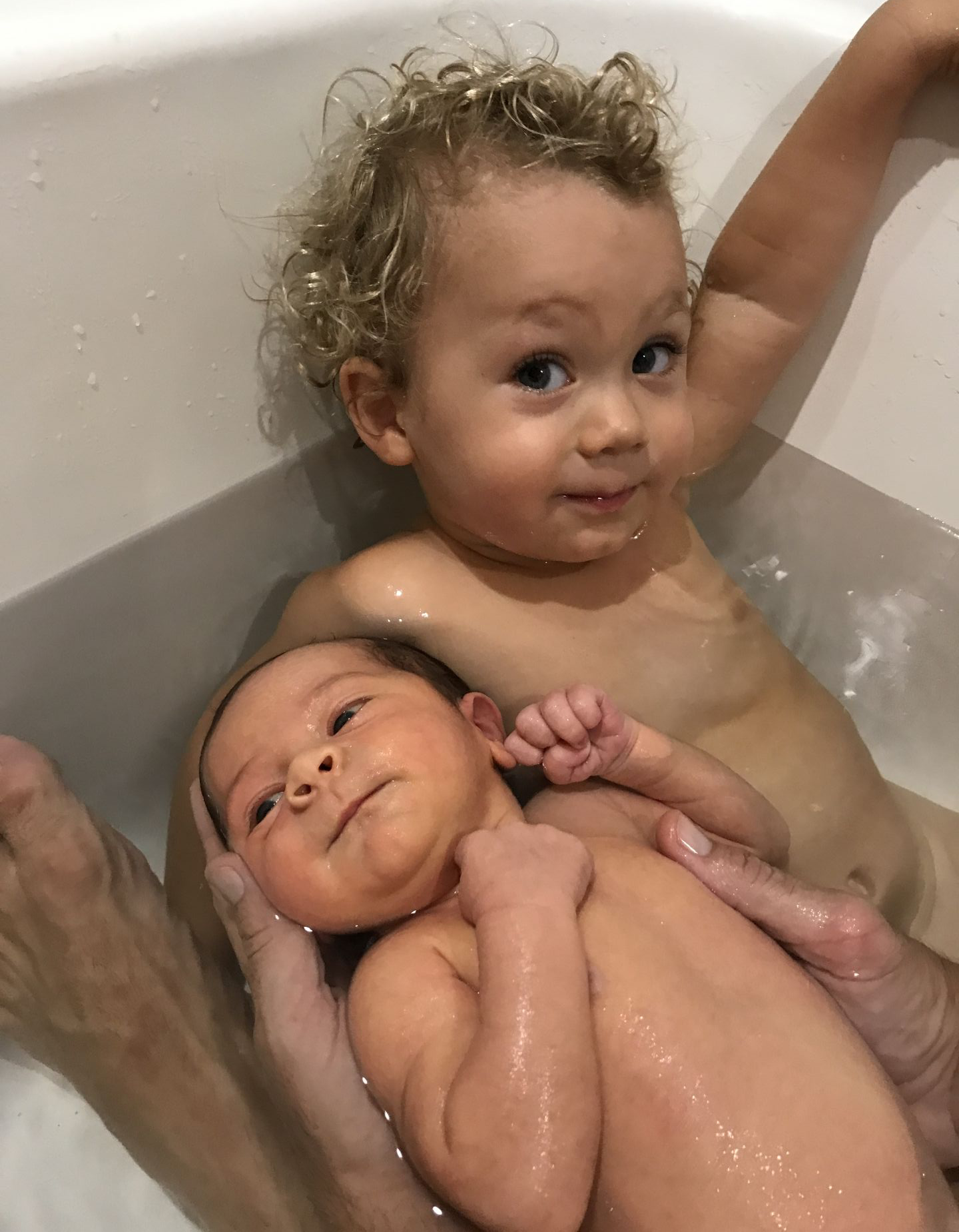
You can start bathing your infant right away if there are no underlining medical conditions. Ask for advice from your midwife or doctor.
Your first bath together will be a special experience, and water will continue to be the element that strengthens your emotional connection throughout your lives.
Water = love!
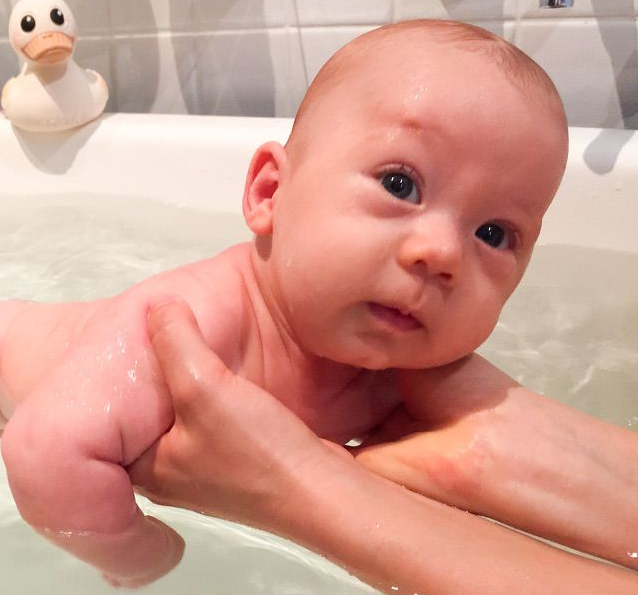
Just being in the water is all a newborn needs. Associating water with love and enjoyment is the goal in these early weeks. Make the bath time, a calm, loving, relaxing experience. Think spa treatment for babies. Dim the lights, some soft ambient music, essential oils. Hold off on the cups of water over their face, there is plenty of time for that when they are older.
There is a small cohort of swim schools who believe that parents should begin pouring water over the airways of their baby from day 1. This practice is unnecessary in the learn to swim process, doesn’t help the child developmentally, and causes a reflexive breath hold to be triggered, which is part of a “fight-flight” response. “A flood of adrenaline and cortisol to your body on your first day on Earth little baby?” - No thanks!
Keep safe
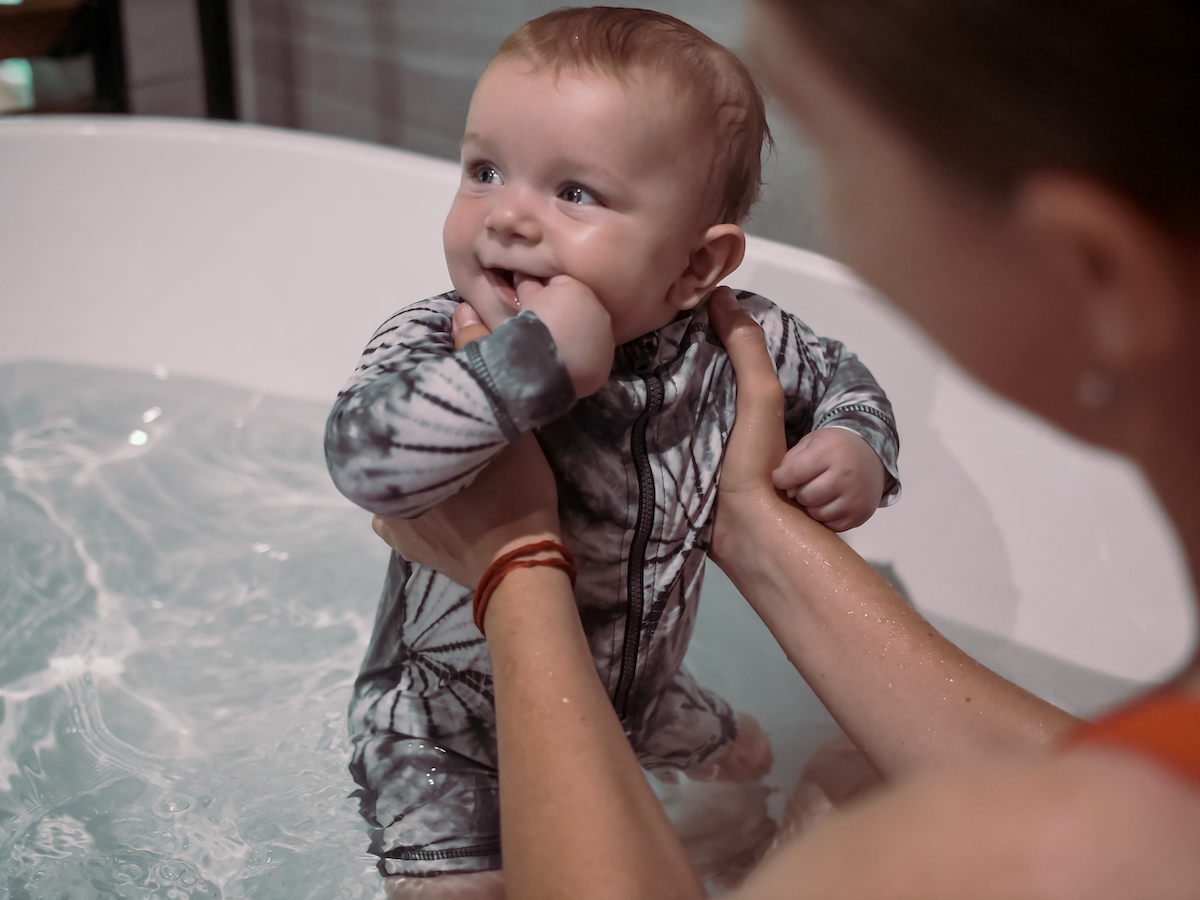
Check the temp of the water - 32°C is perfect. Ambient temp should be no lower than 25°C. Close the door to stop cold draughts. If you notice that baby is shivering, skin to skin contact is the best way to regulate their temperature. A warm bath of 38°C, that feels nice for adults, is not safe for infants. Baby will flush red and appear lethargic if too hot. Strip them and place them under a fan to cool them back down.
Enter the bath safely. If something bad is going to happen when bathing with your baby, it is when you are entering or exiting the bath. a towel or mat can be placed on the bottom if the bath is slippery. Make sure you have one arm controlling the baby, and one arm on a solid surface controlling your self. If you are unsteady on your feet, the safest way is to enter with the baby, get comfortably seated, and have your partner pass them in.
Keep aware of the level of their airway to the water level. Hold them in a balanced way, using soft hands. Parents instinctively know to not let baby’s head flop around. Always support the head when handling a newborn, especially in a bath.
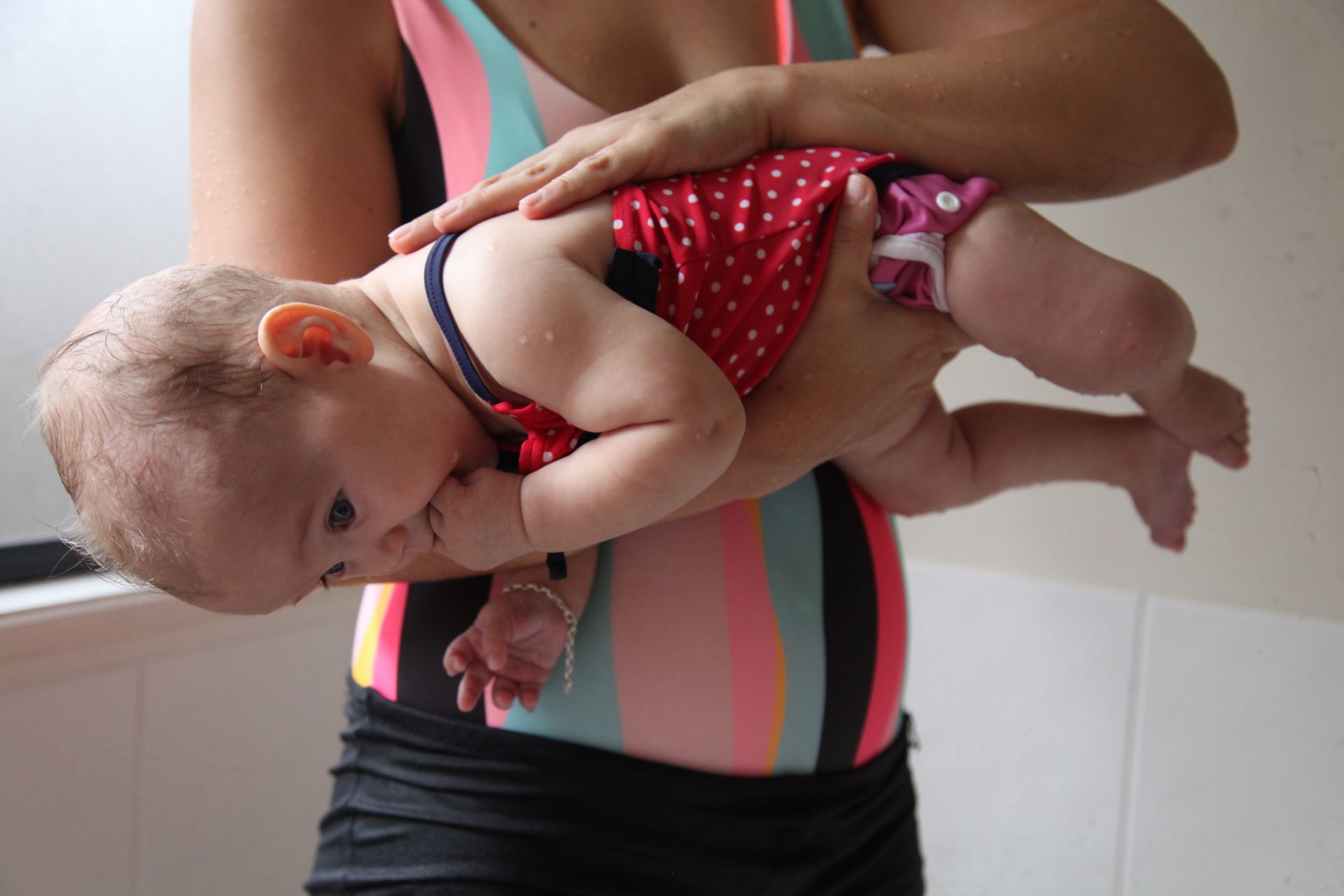
If you do have an accident, and there has been water in the airway, place baby into the recovery position, prone along your fore arm, with their hips higher than their head. Allow time for the water to drain out. Monitor baby closely and if you aren’t sure they have returned to a normal, relaxed breathing rhythm, call 000
Focus all of your attention on baby. This is to keep them safe, and to help you read any cues from them. React to any signals from baby. If certain stimuli is creating tension, return them to the Cuddly Koala position (chest to chest, cheek to cheek) for comforting. Another reason why swimming with your infant is so special. You will never spend as much time focusing on them other than in the bath, and this act, helps to reinforce the bond you have with your child.
Talk to them. Notice their reflexes, reactions, movements, vocalisations. Comment on how you think they are feeling. Tell them how you are feeling. Is this bath time an amazing experience? I bet is is for them!
Familiarise them with the properties of water
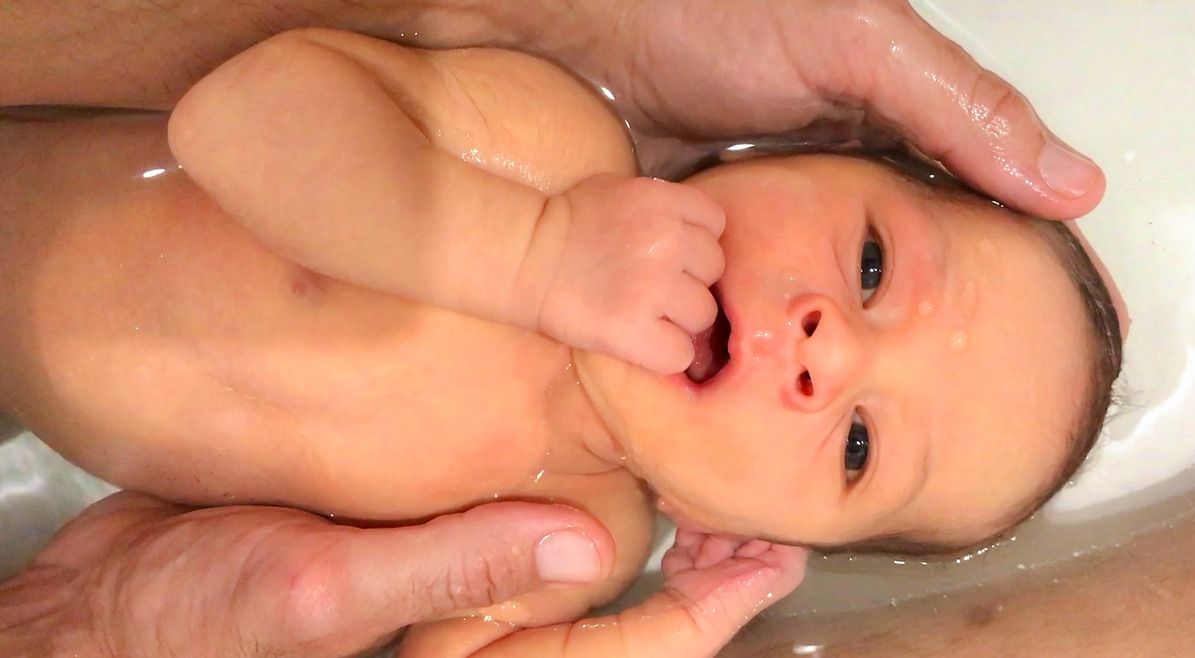
Water is a sensory smorgasbord and most newborns will love the experience. Show them all of the magic of this special element.
Wetness - Tactile stimulation of the skin creates the formation of new neural pathways. Use a watering can poured gently over their body, ears, back of the head, along with some whispered words of love to show them that this is a special time for you both.
Buoyancy - A property they will be familiar with from their time doing laps in Mum’s belly. A back float can be safely achieved by slowly reclining baby with their head supported, while you sit in 20 - 30cm of water. Carefully lower them back until their ears are just under water. Control their head and shoulders with your hands and watch for any arching, or rolling, which could allow water to enter the airway.
Noise - the white noise generated by a slowly trickling tap into the water is hypnotic for infants. Let them experience this with their ears underwater or above.
Currents/resistance - Gentle swishing movements of the bottom half of their body shows them how this element has resistance.
Conclusion
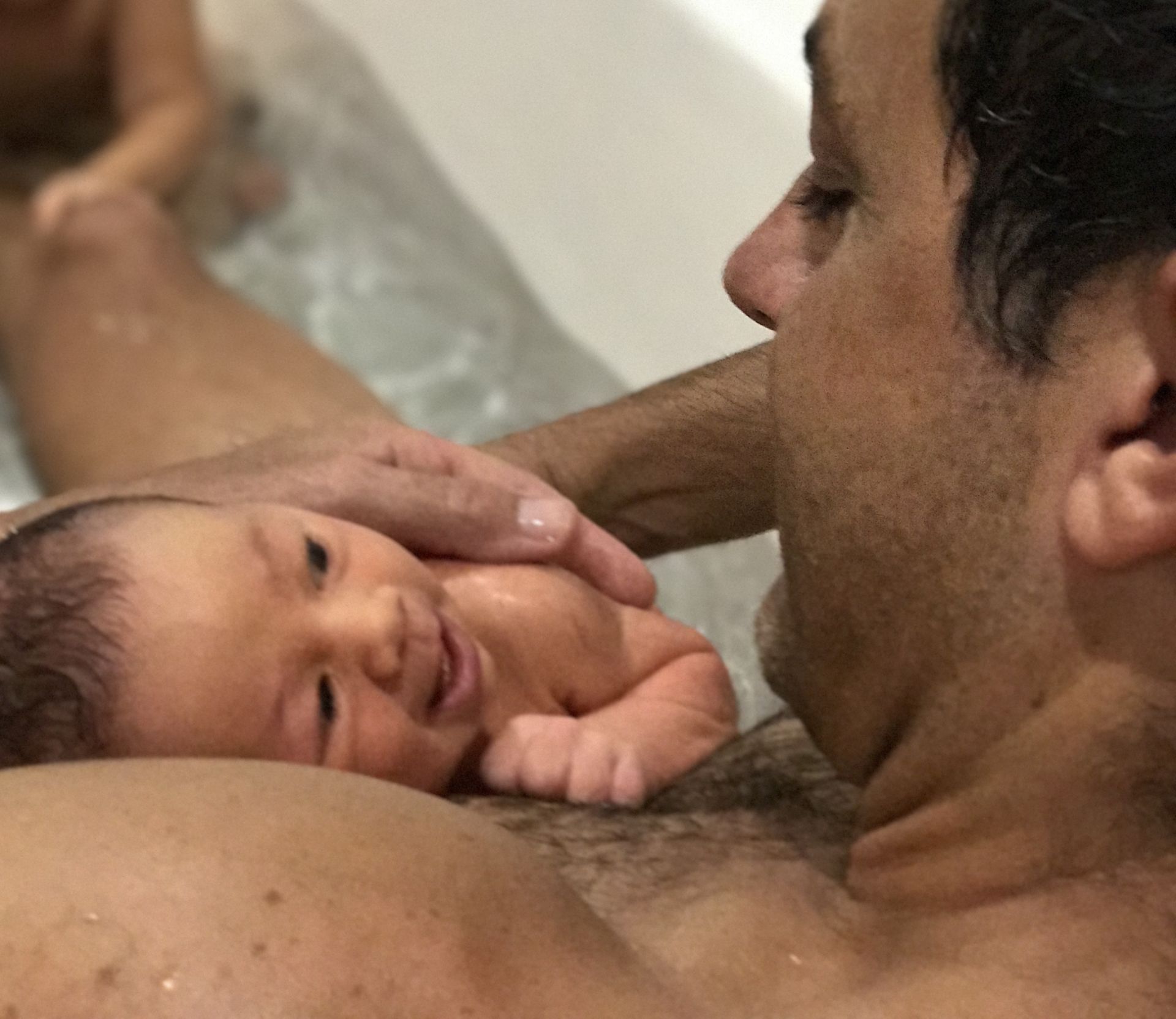
Make bath time with your newborn a magical experience. I still remember the wonder of my first bath with my newborn. Don’t forget to have someone on hand with a camera (as if I need to remind you…).
All children are born water-babies. Newborns don’t need any special breath holding exercises or techniques. Just a warm, safe environment, and time spent forming connections with their loved ones while experiencing all of the wonder of the element of water.
There is a long swimming career ahead of you. You can leave the baby dunking for later. Cherish this time when there is nothing to do but gaze in amazement of your creation and show them how much they are loved.
For more info on how to safely teach baby swimming in your bath, and to learn when they have the “Aquatic Readiness” to progress on to new skills, sign up to our free online course.
Peter Dalle Cort
Director
Welcome to Water
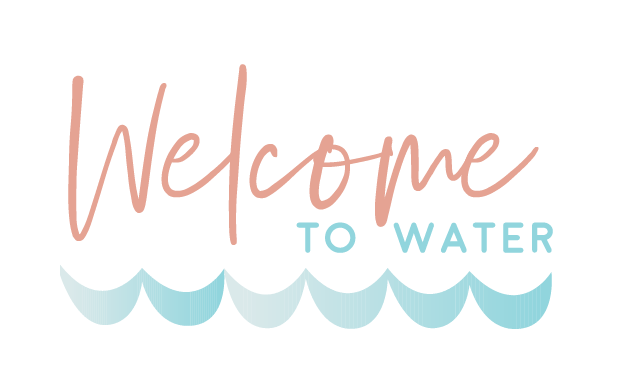
© Welcome to Water
Subscribe to our newsletter now!
Get weekly updates on live streams, news and more right in your mailbox.
Thank you!
